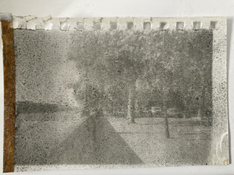PeterWalsh
Member
Hello, I posted this as my introduction to Photrio but I am reposting here in case anyone can advise.
My name is Peter. I am a newcomer and beginner trying to make a Chloro-Bromide projection paper emulsion using a recipe from Denise Ross' wonderful book 'The Light Farm'.
I am substituting the gleatine with PVOH, sometimes also mixing in PVA.
My watercolour paper is subbed with PVA, but still my emulsion wants to dissolve in processing (even if I leave out the stop).
Where I have got an image, the finished product is 'Slow, fragile and has a short life' just as Ilford said it would be.
I've tried adding talc, cornflour, agar agar at various stages.
Any leads would be gratefully appreciated!
Thank you in advance.
My name is Peter. I am a newcomer and beginner trying to make a Chloro-Bromide projection paper emulsion using a recipe from Denise Ross' wonderful book 'The Light Farm'.
I am substituting the gleatine with PVOH, sometimes also mixing in PVA.
My watercolour paper is subbed with PVA, but still my emulsion wants to dissolve in processing (even if I leave out the stop).
Where I have got an image, the finished product is 'Slow, fragile and has a short life' just as Ilford said it would be.
I've tried adding talc, cornflour, agar agar at various stages.
Any leads would be gratefully appreciated!
Thank you in advance.






